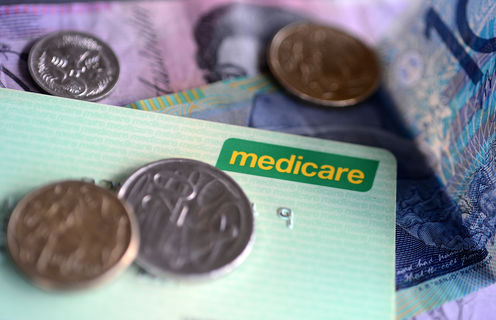
The Federal government’s attempt to impose a $5 co-payment on GP services by regulation raises the same issues as its previous failed attempt to impose a $7 co-payment through legislation.
The consequences of the new policy for patients are self-evident. But some additional points that are less well-known yet nevertheless important need to be highlighted.
First, the “savings” will be largely illusory. A reduction in the rebate will save the government money, but unless this reduces service use, it only means that patients will pay more, or doctors will be paid less for the same amount of work. In other words, it will shift the cost to patients or doctors, not reduce the use of real resources.
Second, no real reduction in the cost of Medicare will be achieved unless some patients reduce their use of doctor services. Almost all of these patients will be relatively less well off because the co-payment will not deter the wealthy. In other words, whatever savings are made will be at the expense of the poor.
Third, if there’s an overall net reduction in the use of doctor services, it will mean that the fixed stock of doctors will have less work (not that there will be fewer doctors). The economic (opportunity) cost of medical care – the skilled workforce that is not available to work elsewhere in the economy – will remain unchanged.
Fourth, an unknown proportion of general practitioners may continue to bulk bill patients and accept the lower rebate. But, in 2011, the income of Australian general practitioners relative to average wages was the lowest in the 16 countries compared by the OECD after Estonia and Hungary.
A more equitable target for government policy would be specialist incomes, which were the fourth highest in the same comparison.
Fifth, the “unsustainability” of Medicare – the ostensible reason for change – is false. While health spending is rising (at this point in time more slowly than at any time since records were available), spending is rising more in many other areas. People now spend more of their income on electronic goods, for instance, and travel or entertainment. This means they are spending a smaller percentage of their income elsewhere.
The point here is that the economy is flexible. There is no obstacle to spending more on health, if this is what we want. Of course, we want value for money. But the barrier to access created by co-payments does not achieve this.
Economic growth also allows increased expenditure in one area without reductions elsewhere. As GDP grows the pie of total income also grows. This means that we could increase the amount of money spent on health without decreasing expenditure elsewhere. Even if GDP grows more slowly than health spending, the absolute (not percentage) increase in GDP will most likely still be greater than the absolute increase in health expenditures.
Finally, the claim that government expenditure on Medicare is unsustainable is also untrue. Because of Australia’s substantial private health sector, public spending on health as a percentage of GDP is among the lowest in the OECD. Only Chile, Estonia, Hungary, Israel, Mexico, Poland and the Slovak Republic channel less of their GDP into health via the government.
The government’s budgetary problems are primarily a result of low taxes in Australia, which, as a percentage of GDP, are the fourth lowest of the 34 countries in the OECD database. The alternative to penalising low-income patients and (relatively) low-income general practitioners is to repair the tax base and raise total revenues to a level more comparable with the amounts collected by most western countries.
Jeff Richardson receives funding from the National Health and Medical Research Council. He is a member of the Australian Greens.
